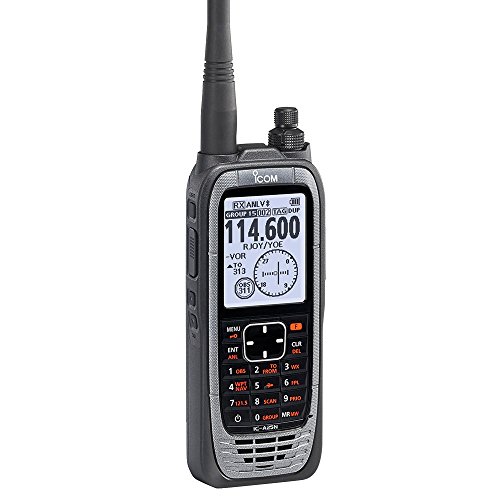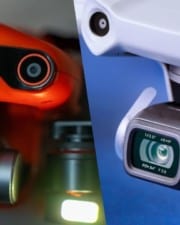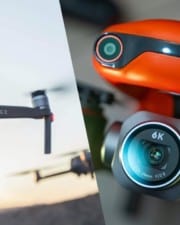Hey! Handheld aviation radios can be incredibly useful, whether as a primary or backup radio for pilots, for ATC practice for student pilots, for plane spotting, or even for drone pilots. Check out this list of the 7 best handheld aviation radios for everyone – pilots and non-pilots alike – with and without navigation.
Handheld Aviation Radio Reviews
First we’re looking at aviation radios that come with built-in GPS for navigation. These models are great for pilots and aspiring pilots, whether it be as a backup radio, practice radio or even as the main form of communications and navigation. Having a redundant form of communication in the air will surely give you peace of mind!
For the more budget-conscious consumer or people who simply do not need GPS and navigational functionality, perhaps for redundancy or peace of mind purposes, a COMM-only radio will suffice.
1. Yaesu FTA-750L Handheld VHF Transceiver (NAV & COM)
- Airband Aviation
- NAV/COM/GPS
- Li-Ion Battery
This handheld radio is very good, and you’re going to be able to easily use it to its full potential. It is very compact, and it still manages to be a full-spectrum aviation COMM/NAV radio. Having access to a state-of-the-art communication and navigation system that fits in the palm of your hand is fantastic. This even has a long-lasting lithium-ion battery that gives you 80mW of clear audio.
One of the best reasons to consider buying this portable radio is the full-dot matrix display. You’re also going to really enjoy the waypoint navigation and GPS logging features of this device. Access to NOAA weather channels makes sure there won’t be any surprises there. It has a backlit keypad that makes using the radio easier than ever. It can even store up to 200 memory channels with 15 alphanumeric characters.
2. Yaesu FTA-850L Color Bluetooth VHF Transceiver (NAV & COM)
- Wireless Bluetooth Operation
- Integrated 66 Channel WAAS GPS Receiver
- 8.33 kHz Narrow Band Compatible
Say hello to the new Yaesu FTA-850L portable airband transceiver – built to meet the needs of top aviators. Enjoy top-of-the-line features like a 2.4″ full-color TFT display and enhanced navigation features using ILS, VOR or GPS capability. Say goodbye to wires with the built-in Bluetooth module that enables operation with a commercially available Bluetooth headset or Yaesu’s optional SSM-BT10 headset.
The FTA-850L is built ultra-tough, encased in polycarbonate housing that meets IPX-5 waterproof rating and stringent MIL-STD-810H standards. You’ll receive a high battery life 2200mAh Lithium-Ion battery, headset adapter, 100-240VAC charger, 12VDC charger/power cable, drop-in charging cradle, backup alkaline battery tray and a heavy-duty belt clip, all backed by an industry leading 3-year waterproof warranty.
3. Yaesu FTA-550L Handheld VHF Transceiver (NAV & COM)
- Aviation Airband Transceiver NAV/COM...
- Li-Ion Battery
- AA Battery Tray
Here is another solid handheld radio option from Yaesu. This model offers you both communications and navigation modes. You’re going to really enjoy making use of the large LCD display. It makes getting the right data very easy, and you’re always going to be able to see what you need to see at a glance.
Like the Yaesu model mentioned above, this gives you access to 200 memory channels. The memory recall ability of this portable radio is truly quite exceptional. People gravitate toward this handheld radio due to the full-dot matrix LCD display, the user-friendly icon-driven menu system, and the brightness of the backlit screen. This is another compact and lightweight radio that works brilliantly.
4. Icom A25N VHF Transceiver (NAV & COM)
- VOR Navigation
- Output power: 6W typ. (PEP), 1.8W (CW)
- Channel spacing: 8.33/25KhZ
Those looking for another good handheld radio will find this offering from Icom to be worthwhile. This aviation radio manages to stand out from the other options in a couple of important ways. One of the most noteworthy things about this device is that it offers a 300 memory channel bank in 15 different memory groups, and you can have 12 different character names. The handheld radio has 6-watts of power, and it even has a waterproof rating of IP57. It also comes with weather channel presets.
One of the other highlights of the Icom IC-A25N is the VOR Navigation CDI. You should also note that this portable radio includes a large 2350mAh lithium-ion battery. This means that it has a long operating time and is going to be convenient for you to use. They have also designed this handheld radio to have a user-friendly interface with a large 2.3-inch LCD screen. In-flight operation and programming will always feel intuitive, and you’ll also love being able to make use of the built-in Bluetooth functionality.
With the separately sold Icom OPC-2379 headset adapter plug, you can easily connect your aviation headset directly to the handheld.
5. ICOM A25C Handheld Airband Radio (Communication Only)
- Flip-flop channel recall
- Smart battery with detailed battery...
- 121.5MHz emergency key
Those who would prefer a handheld radio that only has the communication channels will be pleased with what this unit brings to the table. This actually operates very similarly to the NAV & COM channels handheld radio from Icom that is listed above. It has the same IP57 waterproof rating, and it also offers 6-watts of power. You’ll also be able to enjoy that long operating time due to the 2350mAh lithium-ion battery (and rapid charger).
The big difference is simply that this is only going to be used for communication, and it doesn’t have any of the navigation features. You’ll still be able to enjoy the large 2.3-inch LCD screen, and everything stays very visible at all times. It has user-friendly graphics screens, and the day mode even makes it easy to look at the unit in direct sunlight. This is easy to program, and you’ll always be able to make use of it without things feeling like a hassle.
6. Yaesu FTA-450L Airband VHF (Communication Only)
- Comm Only
- Li-Ion Battery
- Cigarette Lighter Adapter
This comm-only handheld radio gives users 5-watts of output power. The full-dot matrix display looks impressive, and it keeps visibility high in most conditions. This unit offers you 800mw of loud audio output. It is also 8.33kHz narrow band compatible.
As you might expect from a Yaesu aviation radio, this one is going to offer you 200 memory channels. There are 15 alphanumeric characters to make use of. You’ll find the overall usability of this handheld radio to be very high. It has a menu system that is decidedly easy to operate, and programming your favorite channels is going to be so simple.
7. Yaesu FTA-250L Handheld VHF Airband Transceiver (Communication Only)
- 5W TX output
- 700 mW Audio Output
- 250 Memory Channels
Finally, there is another Yaesu handheld radio option for you to consider. This one has a 700mW audio output, and it offers 250 memory channels. This is an increase from the other Yaesu models, and it still offers the same ease of use as before. You’re even going to be able to enjoy an IPX5 waterproof rating, making this a very practical handheld radio to own.
Another thing that sets this portable radio apart is just how rugged it is. Aside from having a good waterproof rating, this is also going to be able to stand up to small impacts due to the casing. You should be able to enjoy very clear radio calls when using this handheld radio. It has an intuitive operating system that works fantastically with the high resolution dot matrix display.
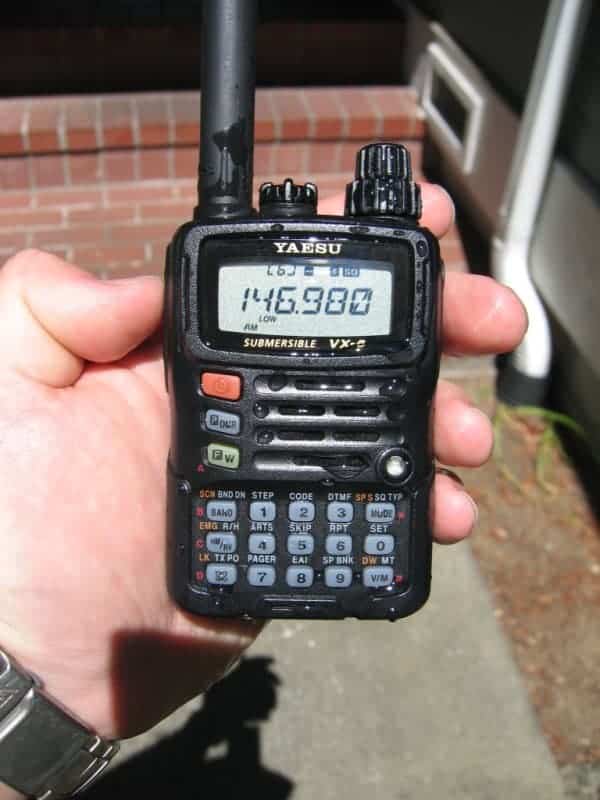
Handheld Aviation Radios Buyers Guide
When it comes to buying handheld aviation radios, there are many different options on the market. There is actually a lot to consider before you decide what you need to buy. Take a look at some of the important information below to learn how these radios work, what you should be looking for, and what type of range you can expect when using these radios. It should give you a more thorough understanding of what aviation handheld radios are capable of.
FAQ: ICOM vs Yaesu
How VHF Comm Works
VHF communications work by broadcasting radio signals over AM. For those who aren’t in the know, AM stands for amplitude modulation. This is the same AM that you might be familiar with through radio stations. VHF communications could work using FM as well but things have simply remained the same for several decades.
Regardless, the important thing to know is that VHF comm works by communicating over AM. Modern aircraft communication radios will have 760 channels that have been spaced 25 kHz apart. These numbers may differ depending on the area where you’re flying. The frequencies being used for aircraft communication lie in the “VHF” range which stands for “very high frequency.”
VHF communications are defined as being between 30-300Mhz. The military uses different frequencies to communicate. They make use of UHF (ultra high frequencies) that are between 300 and 3000Mhz. All aircraft communications essentially work the same way with these messages being broadcast on particular frequencies that pilots can pick up using their radios.
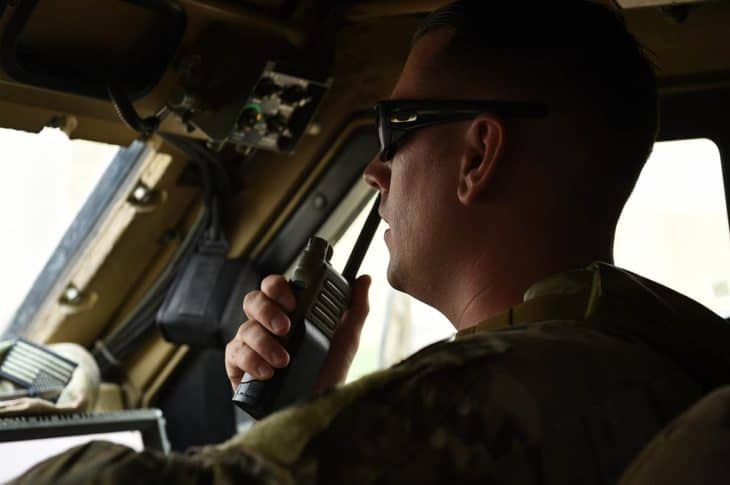
How VHF Nav Works
The way that VHF nav works is not that different from the way that communications work. Most of the navigational equipment that is used in modern times is known as VOR. This stands for very-high-frequency omnidirectional range. At current time, there are around 800 VOR stations in America alone.
These VOR stations operate between 108.00 to 117.050 Mhz. These VHF frequencies have been chosen to limit static interference. The VOR stations make use of a three letter identifier and certain ones will have voice weather. These stations transmit a 30-Hz reference as well as a 30-Hz-variable signal to produce a radial pattern.
What this does is it allows the nav receiver in the aircraft to compare signal phases to figure out what radial the station is located on. The system will then compare the data it has with the radial that the pilot has selected. It can tell you if you’re deviating from the ideal radial, and it gives pilots the necessary data to navigate while flying.
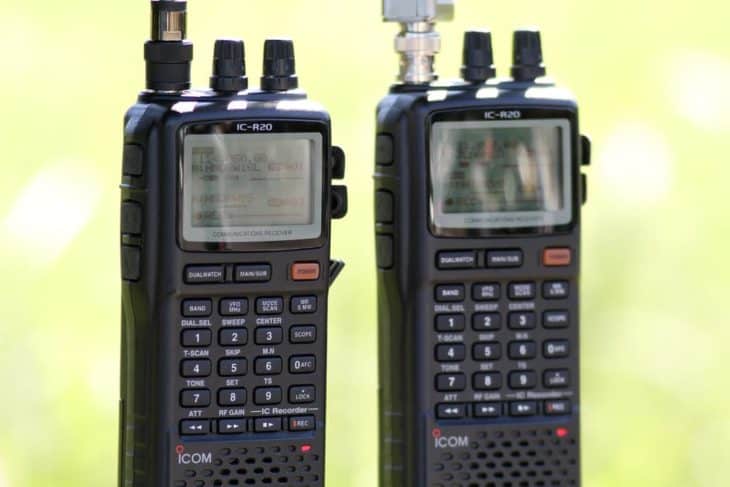
What to Look for When Buying a Handheld Activation Radio
When you’re buying a new handheld activation radio, you’re going to want to keep certain features in mind. Buying just any radio isn’t going to work well for your needs. You want to make sure that the radio can perform up to the right standards for what you’re doing. Look into some of the things that you should consider when you’re shopping for a handheld activation radio below.
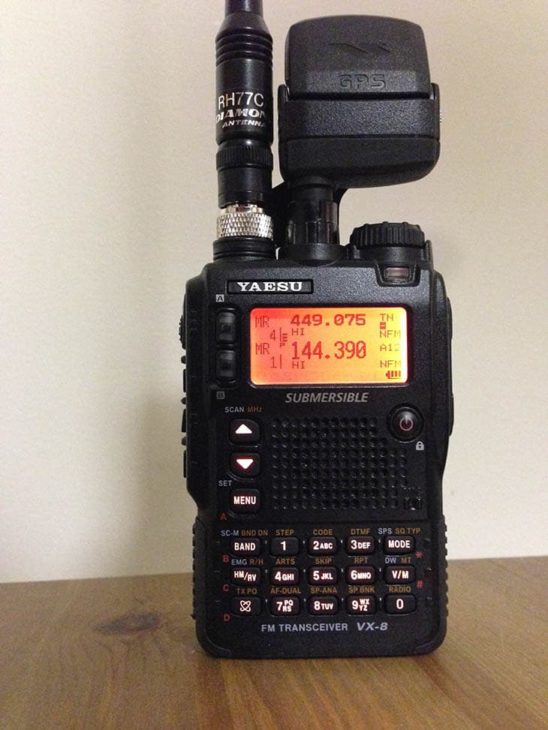
Portability
You might not want to buy a handheld radio that is going to feel too bulky. One of the appealing reasons to own a radio that feels lightweight and extremely portable is that it won’t get in your way. You want to be able to carry this around for emergency purposes. You shouldn’t have to feel like your radio is getting in your way, so do your best to buy one that is compact enough to be practical for you.
Simply take the time to look at the bulkiness of the radio to see if it is too much for you. If it is, then you’ll certainly be able to find a smaller option to consider. There are many radios on the market, and finding a perfect option is not going to be overly difficult if you’re patient.

Ease of Use
Some of the handheld aviation radios are going to be easier to use than others. Depending on how the radio has been designed, it might wind up being difficult to program your favorite channels. Most modern handheld aviation radios make it a point to make things very user-friendly. The user interface makes a big difference when you’re using these handheld radios.
If you want to be able to program things and use the navigation functionality while in-flight, then you should do your best to find one that is easy to use. This is going to give you a better overall experience. It’s worth taking the time to find a handheld aviation radio with an intuitive interface and convenient features that make your life easier.
Visibility
Visibility is also an important thing to keep in mind. Not all of the LCD screens on these portable radios are going to be made up to the same standards of quality. The best handheld radios are going to have bright screens that are easy to see in different situations. This is important for when you’re trying to program it and for when you’re looking for nav data.
There are some handheld radios that have been designed with backlit screens so that you can see what is going on easily. Many of them also make use of designs that make it easy to see them in direct sunlight. A good radio should also have a night mode that illuminates things enough to make it easy to use. As long as you keep this in mind, you shouldn’t encounter any problems.
Batteries and Battery-Life
The types of batteries that are taken by these handheld radios will differ. Many of the most popular handheld aviation radios will make use of long-lasting lithium-ion batteries. There are some that use other types of batteries, though. You will even find certain radios that make use of AA batteries. You’re going to want to put some thought into which type of battery situation is going to be the most convenient for you.
Most professionals agree that having rechargeable li-ion battery packs will be the best way to go. This allows you to simply recharge the battery pack without having to replace it. These batteries can even last for very long periods of time. It makes things as convenient as possible during longer trips.
If you do want to go with a AA battery pack handheld radio, then it’s smart to be prepared first. You’re going to need to carry spare batteries around with you all the time if you wind up going this route. This could make it less cost-effective in the long run. You might save some money when buying a AA battery radio initially, but you’re probably better off getting one with a long-lasting lithium-ion battery.

Communication / Navigation
The vast majority of all handheld radios for aviation are going to be sold in two different ways. You can find radios that are simply meant for communication purposes. It’s also possible to buy radios that are meant for both communication and navigation. If you’re looking to save money, then you should know that the comm-only models are generally going to be the least pricey.
The navigation functionality of these handheld radios can be very helpful, though. This will allow you to track VORs and ILS, giving you more information when you’re flying IFR. It’s worthwhile for many people to go ahead and get a handheld radio that has both communication and navigation functionality. Before you make your decision, you should simply try to figure out whether the navigation functionality is going to be important for you.
If you think that you can get away without using the navigation functions, then you might as well save your money and skip on localizer functionality. Being able to keep your costs lower might wind up being the more appealing option. Simply think about the benefits of having the navigational information available to you. If it sounds appealing, then you might be willing to pay out some extra cash.
Receiver-Only or Transceiver
The least expensive radios on the market are only going to give you access to receiving signals. They won’t be capable of sending radio messages. Depending on what you’re buying a handheld radio for, a receiver-only model might not even be useful to you. Before you go out to buy a new aviation radio, you want to make sure that it has both receiver and transceiver functionality.
Of course, if all you’re planning to do is to listen to conversations using the radio, then a receiver-only unit is going to work out just fine. Those who want to purchase a handheld radio to use as a backup or alternative for the aircraft’s radio will want one that has a transceiver. As long as you understand this, you shouldn’t accidentally make a bad purchase. Just look at the details before you buy the radio so that you can be sure that you’re getting the right thing.
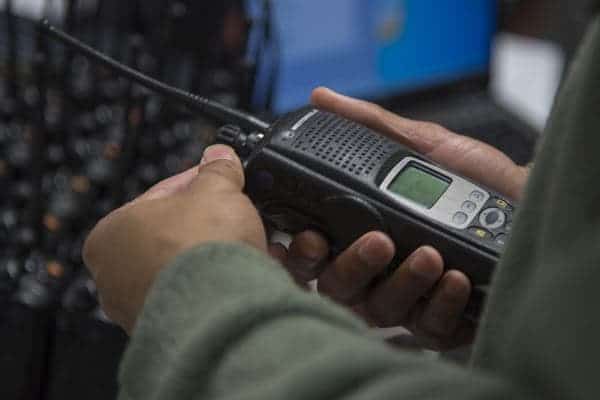
The kHz of the Radios
The kHz of the portable radios actually matters quite a bit, too. If you’re going to be tasked with flying over the EU, then you’re going to need a radio that has 8.33 kHz. You see, there have been some changes to the way that things are done in the EU. New regulations have changed the spacing of frequencies over there, and it is not required to use 8.33kHz.
The older handheld radios that are 25kHz are now completely obsolete when it comes to flying over the EU. Keep this in mind when you’re buying a new handheld radio. The 25kHz models might work fine elsewhere in the world, but it might be best to get something that is the most up to date. This is especially true if you might want to work in the EU even for a limited period of time.
Handheld Aviation Radio Range
The range of a portable handheld aviation radio is going to differ from model to model slightly. Regardless, you can expect most of these portable radios to have a range somewhere between 10 and 20 miles. This is going to be more than enough to make use of it in an emergency situation. These devices typically don’t have the range of panel-mount radios, and at further distances, the calls will not be as clear.
Once you’re within five miles of the airport, the reliability of these radios will become better. Some radios will be able to work and give you fairly clear calls at a distance of 20 miles. Others will not work at all at this distance. Just understand that most handheld radios that are fairly modern will give you at least around 10 miles of range in an emergency situation.
Aviation Radio Frequencies
In the United States, the civil aircraft communications band is between 118 and 137 MHz. This is generally going to use 25 kHz spaced channels. There are also some flight test stations that are making use of 8.33 kHz spaced channels in the 121.4-123.6, 128.825-132.0, and 136.5-136.875 ranges. Things will be different when you’re talking about other countries, and the EU has switched to using 8.33 kHz spacing.
FAQ about Handheld Aviation Radios
Related Posts


